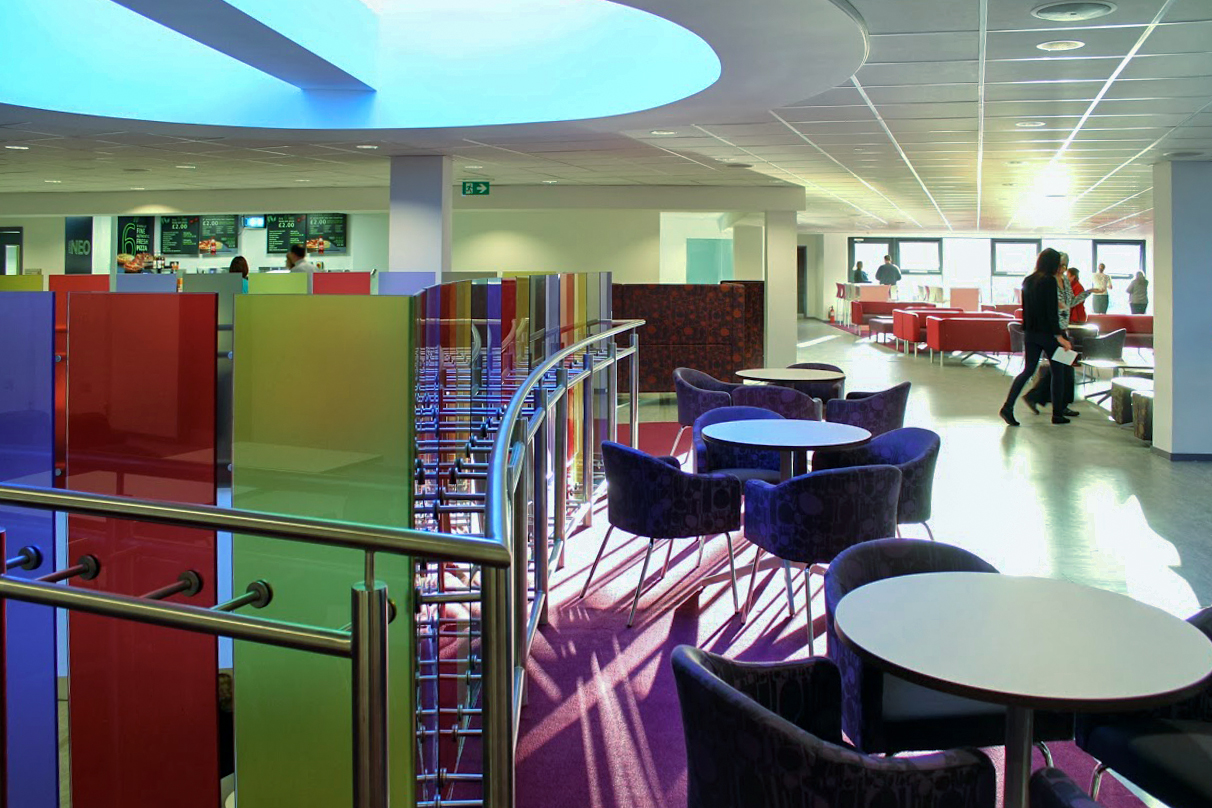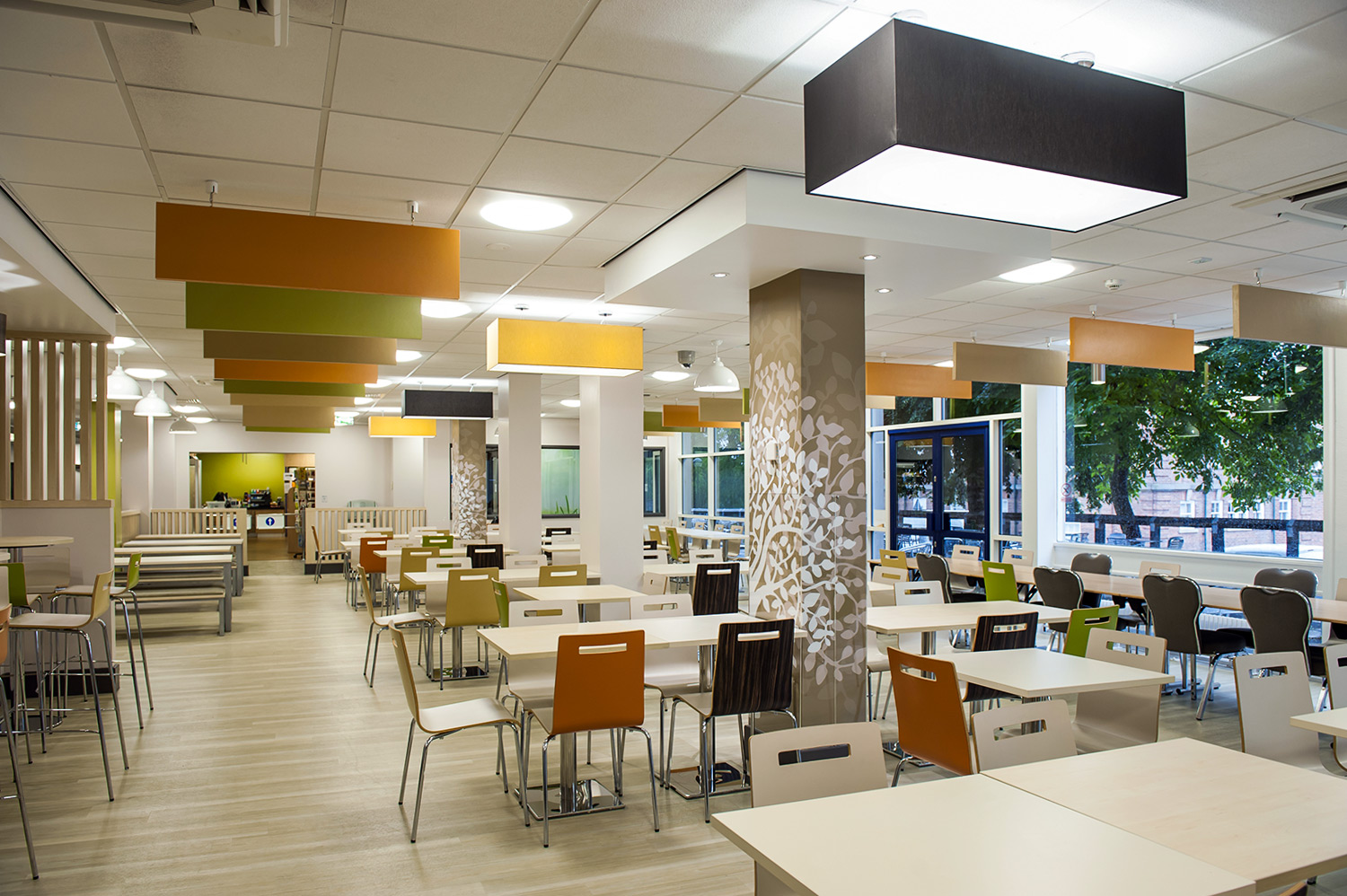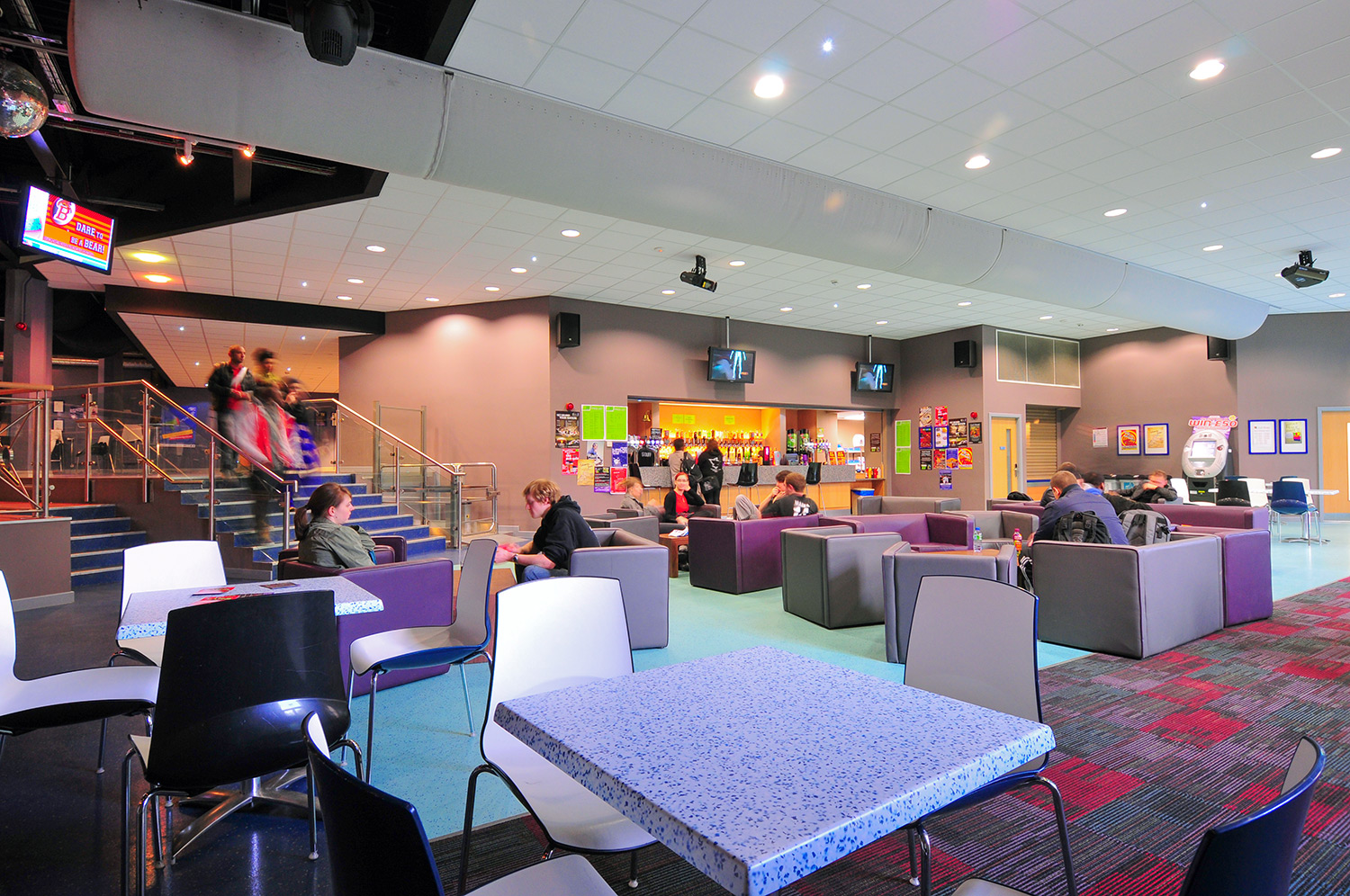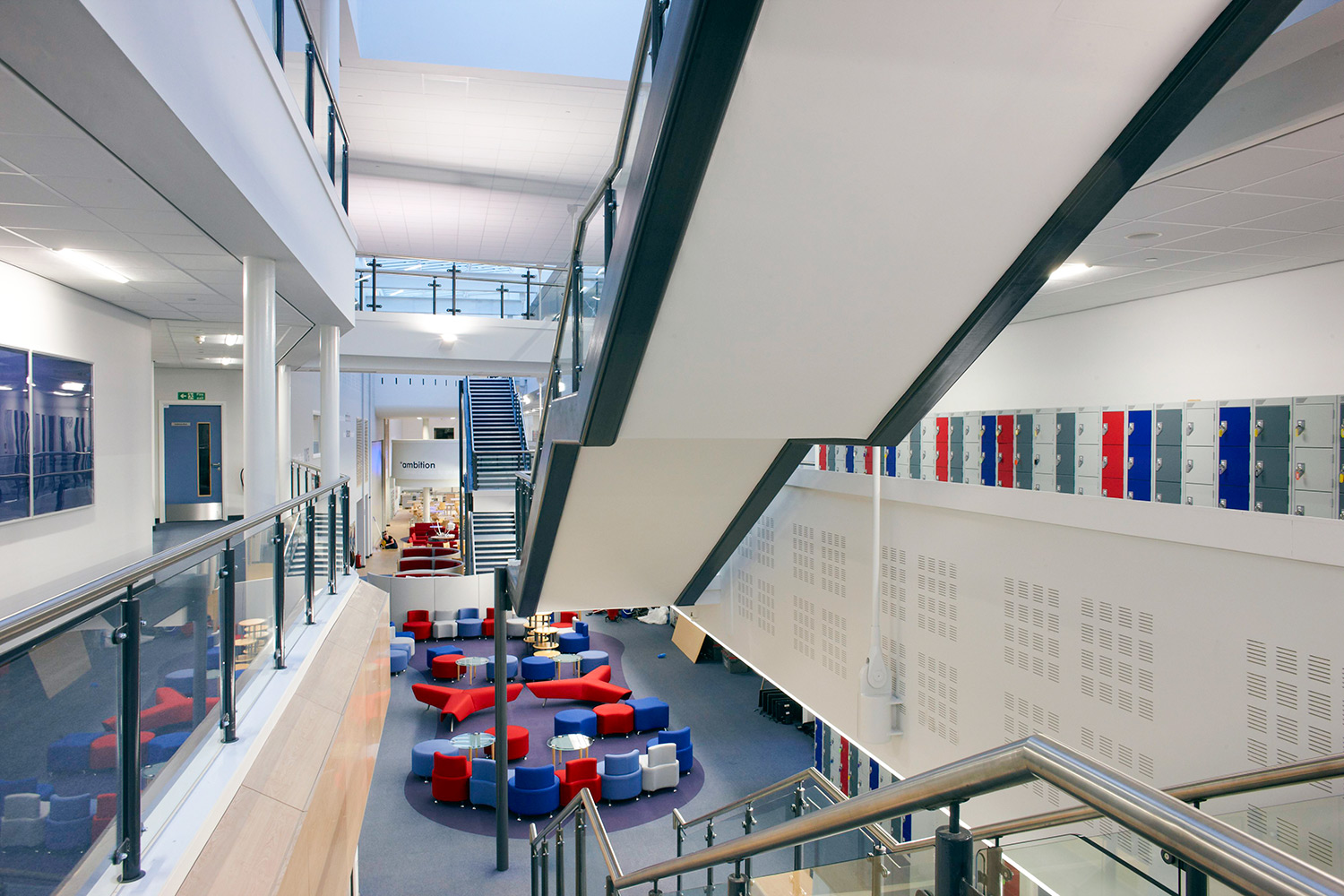SOCIAL LEARNING ENVIRONMENTS
Understanding how learners learn and creating tailored inspirational learning environments to support teaching is the essence of high-quality education facilities
Working across different education sectors we have developed a deep understanding of how learners interact with both their peers and the spaces we design. Some of the best environments for learning are outside of the formal classroom or lecture theatre. These are the accidental and incidental learning opportunities that happen over a coffee, in a small group breakout space or on a bean bag with a tablet. The careful mix of space, furniture, IT, and extra-curricular activities will generate inspirational and vibrant social learning environments, supporting student development and enhancing their experience.
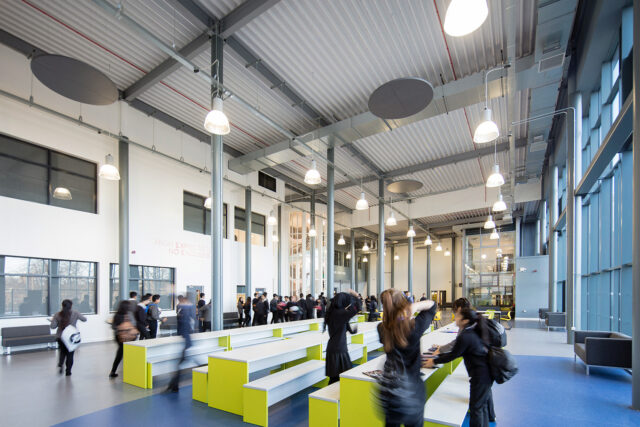
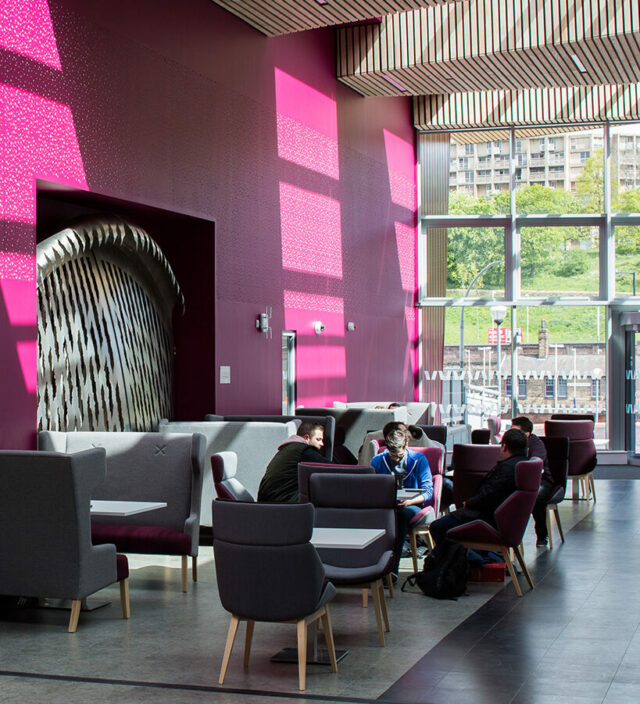
“The new atrium roof in particular looks stunning and has been extremely well commented on in recent weeks – it provides a great showcase and vibrant and exciting new space for the University.”
Director of Estates & Facilities, Sheffield Hallam University
SOCIAL SPACE
The social end of the spectrum, where the space is specifically designed to support social and relational interactions in a relaxed contemporary environment. Food and drink are the main draw, with flexible space to create venues for gigs and larger gatherings. Lounge spaces create a quieter vibe where more intimate smaller groups can meet. During the day they are used as drop-in spaces where individuals and small groups can work and interact in a more social environment. At night they are transformed into vibrant venues.
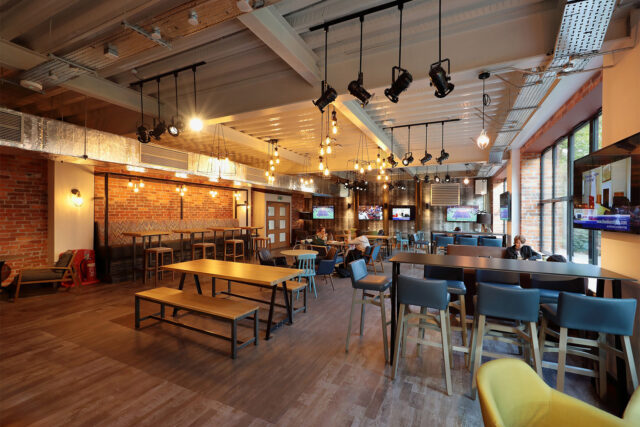
STUDENT CENTRAL
At the heart of the campus, the student central building brings together a unique blend of social, educational, and student support spaces, connected to a wider university offering including Retail, Learning Resource and Sports facilities. These hubs become the centre of student life on campus providing a one-stop-shop of facilities and activity spaces to enrich the student experience. The balance of space and use does include the social aspects of university life, together with dedicated formal learning areas within the same facility. This enables diversity and greater flexibility of use.
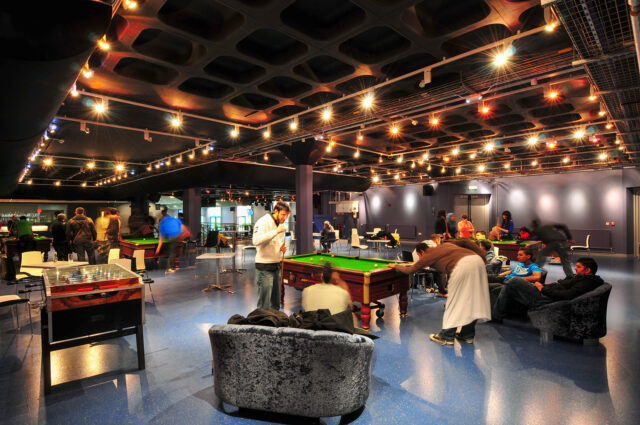
LEARNING HUBS
Spaces between formal classroom and lecture spaces can be creatively adapted to provide a range of informal more social learning environments. Access to WIFI is expected across the university estate, the selection and location of furniture, IT interfaces, and finishes then determines the nature of the working environment. The draw can be a local food offering; however, the main emphasis is on individual and small group working spaces within a less formal environment.
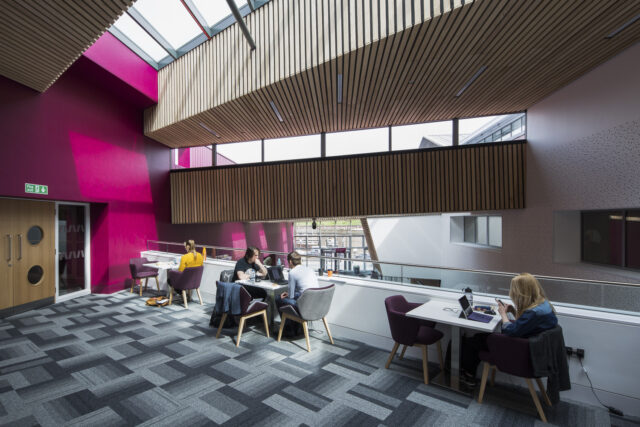
BREAKOUT SPACE
The Building Schools for the Future (BSF) programme designed spaces around a pedagogy that places the learner at the centre and wraps resources and technology around the student to support their lifelong learning. Agile classrooms focus on the flexibility and adaptability of space through the use of mobile technology, moveable partitions, and furniture. Breakout space is a valuable resource for 1:1, small group and whole class interaction. Specifically designed to create a more relaxed and open environment to support the different individual student learning styles and capabilities. Understanding the nuance of these spaces allows their expression to move beyond BSF and integrate into more mainstream secondary and 6th form spaces.
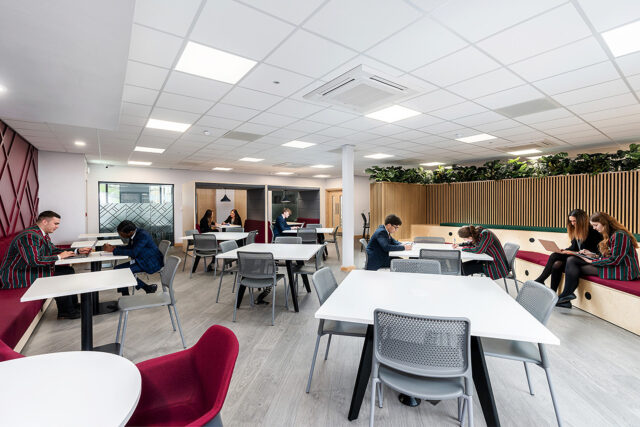
PRIMARY LEARNING HUB
Blending the Learning Resource and IT Space allows a greater level of flexibility in delivering the curriculum. Placing these facilities in the centre of the primary school allows a flow of learning from the formal classroom into a light, airy, and inspiring heart space. The ethos and vision of the school are clear, priorities are placed on show, and the students have a focus and aspiration throughout their school day. The careful mix of furniture and technology will create a tailored environment which enables greater student engagement and an enhanced learning experience.
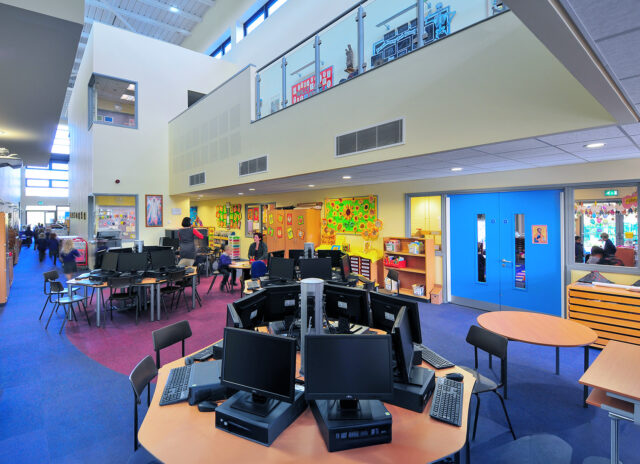
Newsletter
Lorem ipsum dolor sit amet, consectetur adipiscing elit. Mauris malesuada, mauris faucibus posuere lacinia, magna lorem consectetur nulla, quis sagittis justo nulla eu felis.
